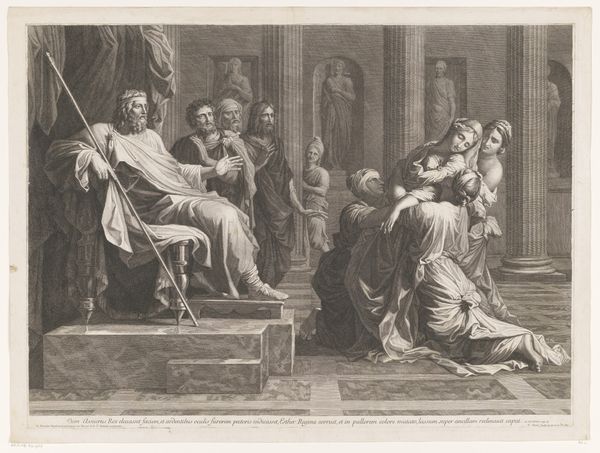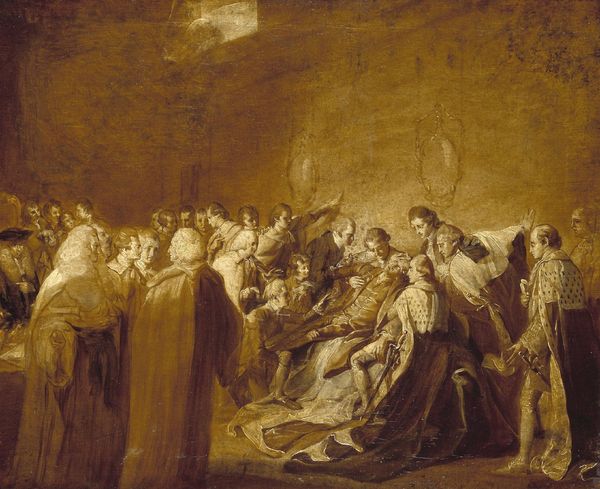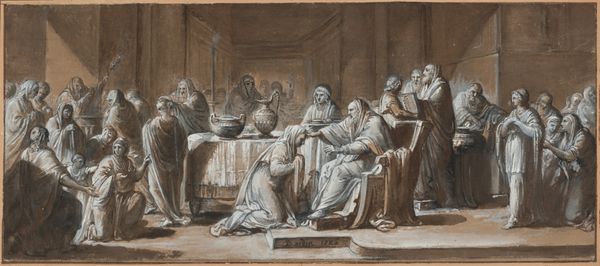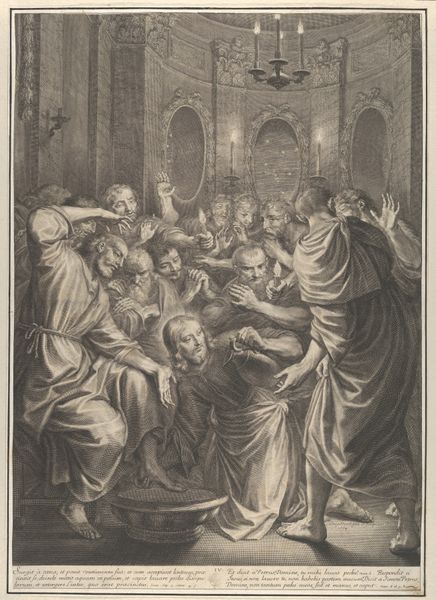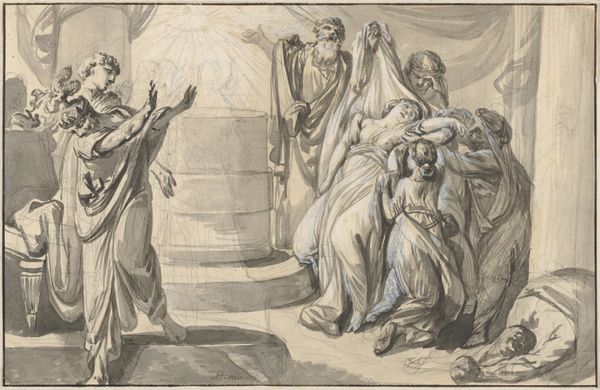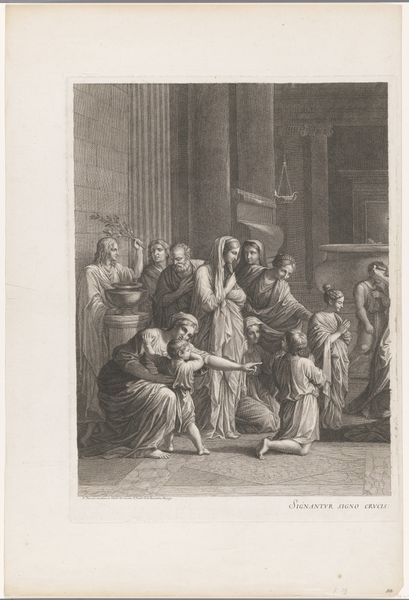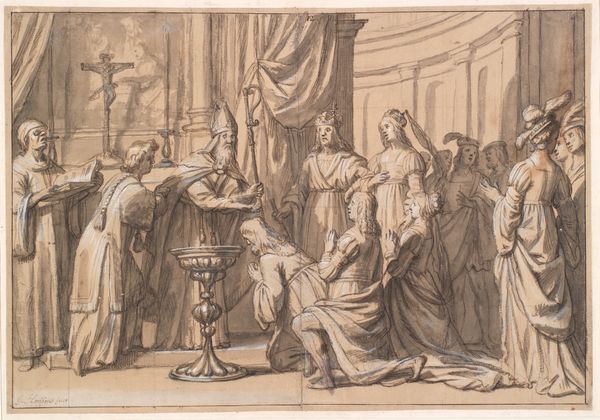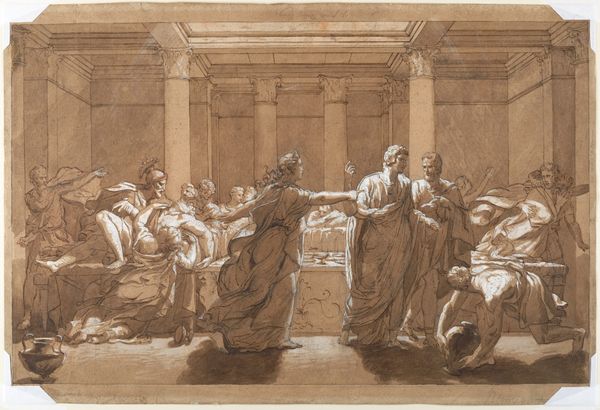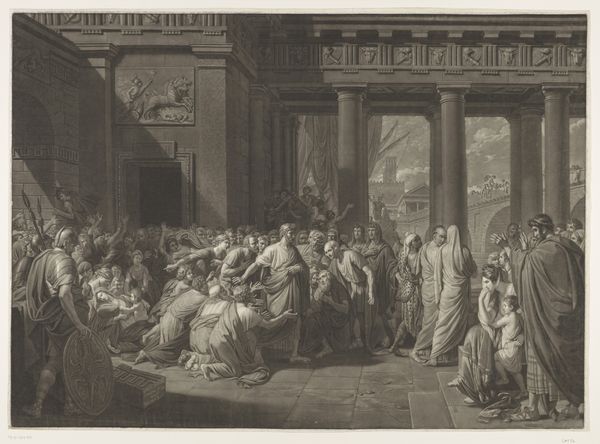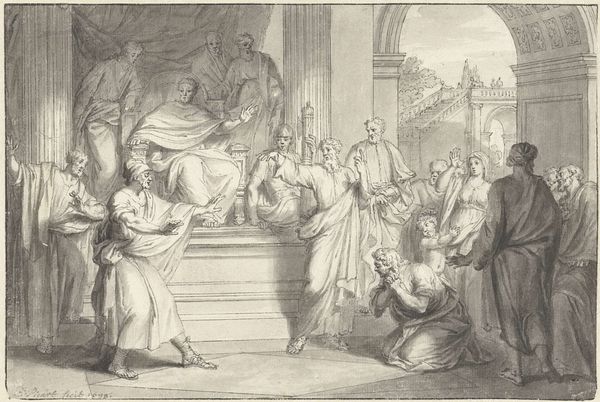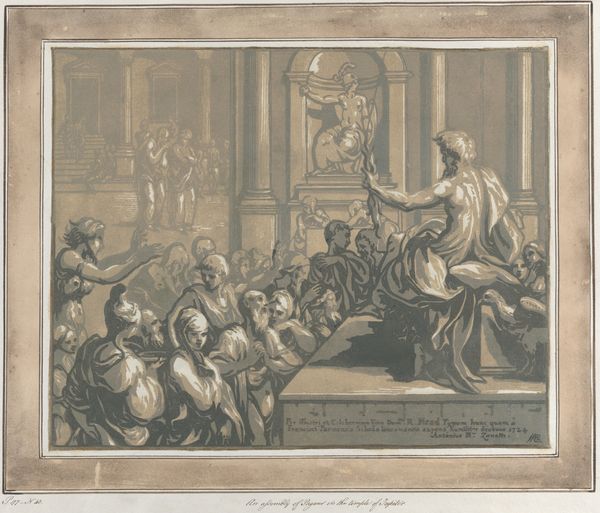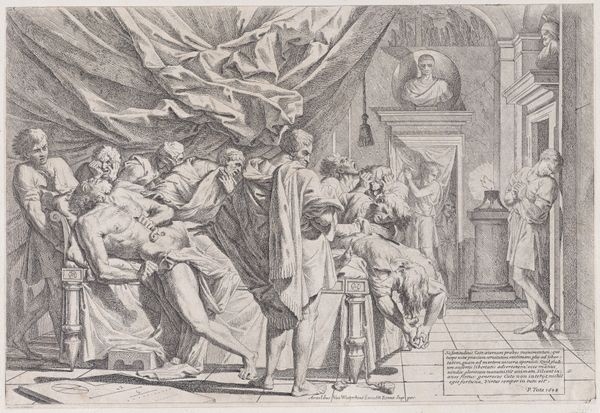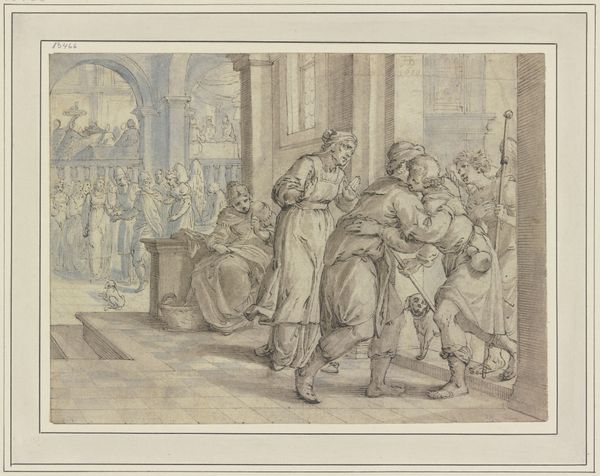
Dimensions: overall: 52.7 x 64.2 cm (20 3/4 x 25 1/4 in.) framed: 79.7 x 91.6 x 6.7 cm (31 3/8 x 36 1/16 x 2 5/8 in.)
Copyright: National Gallery of Art: CC0 1.0
Curator: Let's consider John Singleton Copley's history painting, "The Death of the Earl of Chatham," dating from 1779. Editor: It immediately strikes me as incredibly theatrical. The figures are draped and arranged like players on a grand stage, caught in a dramatic light. Is that oil paint? It has a very interesting effect with the light and the shadow, almost a bronze or parchment look. Curator: Indeed. This work embodies Neoclassical ideals while holding onto certain Baroque aesthetics. The choice of portraying Chatham's collapse in the House of Lords is no accident; it places his mortality against the backdrop of parliamentary power, exploring themes of leadership and the burdens of political life. The use of oil allows the figures to take on an almost sculpted quality. How do you read the texture in the drapery around him? Editor: You’re right to consider its impact and craft. I see that texture in direct opposition to the relatively uniform appearance of the figures in the background. It signifies rank, prestige, the weighty material used in political ritual and public theater. You mentioned Neoclassical style and Baroque elements, but what about labor and economy in the production of the work? Were paints premade, or by hand, affecting Copley’s approach and speed in composition? And who would pay to preserve or erase that labor in subsequent reproductions of this very event? Curator: An excellent question. Consider the historical moment—revolutionary sentiment brewing. Copley, having experienced both America and England, might be subtly exploring shifting power dynamics. The scene commemorates a figure who advocated for conciliation with the colonies but ultimately fell ill during a heated debate. I find myself drawn into the social narratives woven into the piece by the subjects' pose. Editor: But those stories are material! Consider the labor and time of crafting, pigment sourcing, transportation to England, etcetera; Copley himself could never escape these questions either. The artwork signifies the tension between artistry, propaganda, economy, and social unrest. This gives me a very nuanced view. Curator: Very true, it truly highlights interconnected themes. Thank you for your labor too. Editor: And thank you for reminding us how art can reveal history if we look deeply into not only symbolism but also material practice.
Comments
No comments
Be the first to comment and join the conversation on the ultimate creative platform.
